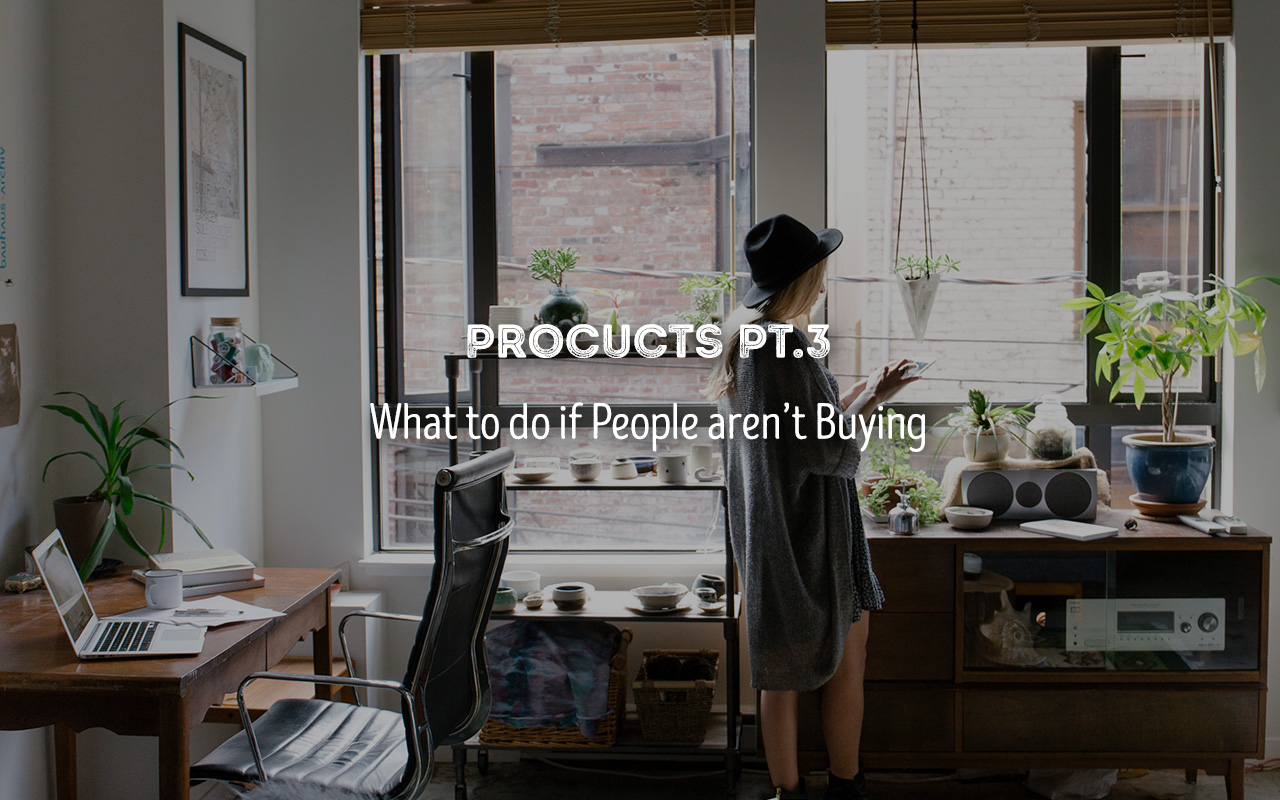
When people aren’t buying
Now that you have your products developed and manufactured and are delivered to you in their neatly design packaging. They are ready for sale. Ready for you to ship off and provide your customers a unique experience crafted entirely towards that person. You’re excited, you’ve done the marketing, the preparation, and you’ve made the landing page explaining how great the product is.
But no one is buying. Launch day comes and it’s a slow, stagnant crawl to make the sales you were expecting. But why is this? You’ve told your audience when it launches “Why aren’t they buying? Those people in the comments section on Instagram said they would buy the t-shirt when I posted those mockups”. Herein lies the problem.
You were making sales expectations based off what people were saying in a comments section on social media. A catastrophe if this was your first entry into the products market and you were creating based on how many people you expected to buy based on your audience size. The rule of thumb is that; For every 20 people in your audience, expect 5% of those to buy your product. That’s 1 person.
If you only have a small audience, your concern shouldn’t be trying to sell more to your existing audience, it should be trying to expand your audience, increase your reach and bring more people in. You do this by creating great work, being active on social media, curating your work, and being consistent with it. It’s not going to happen on its own. In fact, don’t be afraid to reach out to others and their platform to help you grow yours. Join another platform, partner up with another creative or store, do guest features, invite others to interview on your site.
It’s no mystery that the more people in your audience, the greater potential for increased sales. So if you have a smaller audience at the beginning, of course you can still sell products, but don’t be expecting large conversions. Meet new people.
There’s pride in doing something yourself, but there’s no pride in stagnation.
If you have a larger audience of 10,000. There you don’t have a reach problem. You have a conversion problem. Maybe you didn’t listen to what people say they wanted but you wanted to make the product anyway because you thought it was cool. Sometimes tunnel vision can get in the way of seeing something for what it really is when that thing you made is aesthetically cool to look it, but it may not serve a purpose other than looking cool.
The easiest way to sell a product is to ask what your audience wants from you. Do some research and spend time asking and getting people to interact with you. Give it away to a select few in a competition style giveaway then ask them questions about what could be improved about the product. Is this the type of thing they want from your brand? This means being smart on social media. Competitions, giveaways, feedback, a voting system, email testimonials.
Get people involved with the making process. Be straight with them, ask what they want and deliver it in a way that shows that it solves their problems.
What happens when you’re getting traffic to your landing page and no one is buying? You’ve managed to get them there which is a great start, but now you need to close the deal, but you’re not converting people. Those middle of the road people who aren’t sure whether to buy your product or not will be the hardest sell. People who don’t want your product were never going to buy it anyway. They were never your target audience so don’t waste time trying to convert the unconvertible.
You have to construct a narrative around your product that resonates with your audience, that allows those people sitting on the fence to connect with your message. By constructing a message that resonates with people, you’re giving those people a glimpse into a life with your product. Perhaps it’s a product that makes their life easier, or gives them a certain status or sense of belonging. You have to sell that life to them depending on what your product is.
How do you sell that life to them when you don’t really know what their problems are? This is where you must have a conversation with people in your target audience about why they would buy your product and what their struggles are. What they provide to you as an answer, you can use directly to sell your product. People with a similar struggle will identify this immediately and think that you are reading their mind. Thus connect with you and your product and increase the chance that they buy it.
The key is to reach out to a friend or someone you can trust whose also within your target audience and ask them what their struggles are. It needs to tell a story of what people are struggling with. The landing page needs to convey that you understand their problem. When you show people that you understand their problem better than they understand, they will automatically attribute your product as the best solution to their situation.
Is your problem that you don’t have an audience of people to launch to? or is your problem that you can’t convert those in your audience that aren’t sure about buying your product?
When you make what people want, they will buy it.
This is part 3 in a series of posts about selling products.


